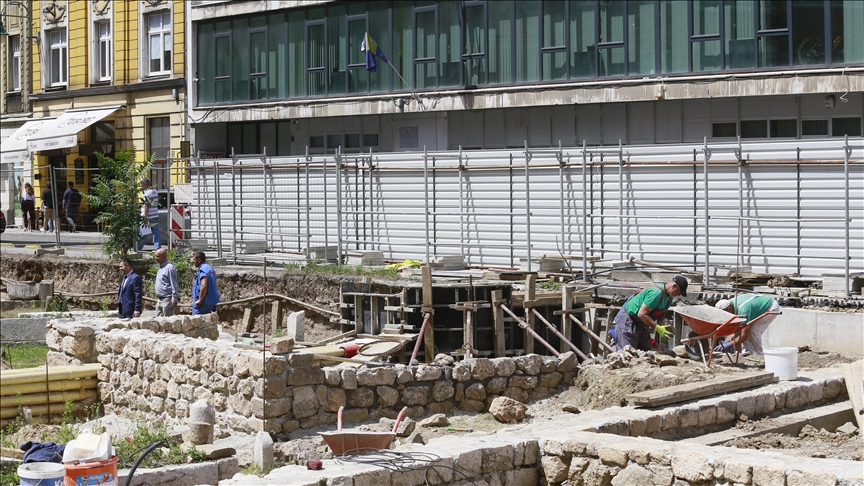SARAJEVO: Bosnia and Herzegovina is set to unearth the ruins of a 16th-century Ottoman mosque in the capital Sarajevo.
The Kalin Haci Ali mosque, one of the oldest in the capital, was built in classical Ottoman style in 1535.
However, it was demolished for unknown reasons during the Yugoslav period in 1947 and its ruins lay under rubble for decades.
The Islamic Union Foundations Administration of Bosnia is carrying out the archaeological work, which will soon be completed. The Turkish Cooperation and Coordination Agency (TIKA) also supported the project launched in 2018.
The archeological site with the ruins of the mosque will be opened as an archaeological park after the studies.
The area will also include visuals and information showing the state of the mosque before its demolition.
Senaid Zajimovic, director of the Islamic Union Foundations Administration, told Anadolu that the complex survived until 1947, together with the mosque, school, fountain, and other buildings. Other buildings were built over a part of the demolished mosque, he added.
“There are many similar structures in Sarajevo. A total of 30 structures were demolished after the Ottomans left the region. We want to revitalize these areas, present them to the public, and preserve our rich history and culture. We want to share it with our people,” said Zajimovic.
Architects Narcisa Basic Gakovic and Selva Karacevic Kapic are working with their team on the project to unearth the ruins of the mosque.
Gakovic said Ottoman-era buildings will be featured in the archaeological park.
“We aim to make visitors experience what it was like to live in the Ottoman era and introduce this sacred area. The works are progressing in a disciplined manner according to our plans,” said Gakovic.
She added that they plan to complete the work in August.
Over 20 Ottoman mosques destroyed in Sarajevo
More than 20 Ottoman mosques, including the Kalin Haci Ali mosque, were destroyed or demolished in Sarajevo during the Austro-Hungarian Empire and later Yugoslavia, which ruled after the Ottoman Empire left the region.
The demolitions changed the identity of the city and shopping malls, buildings, or hotels were built in place of these structures of historic and architectural importance.


